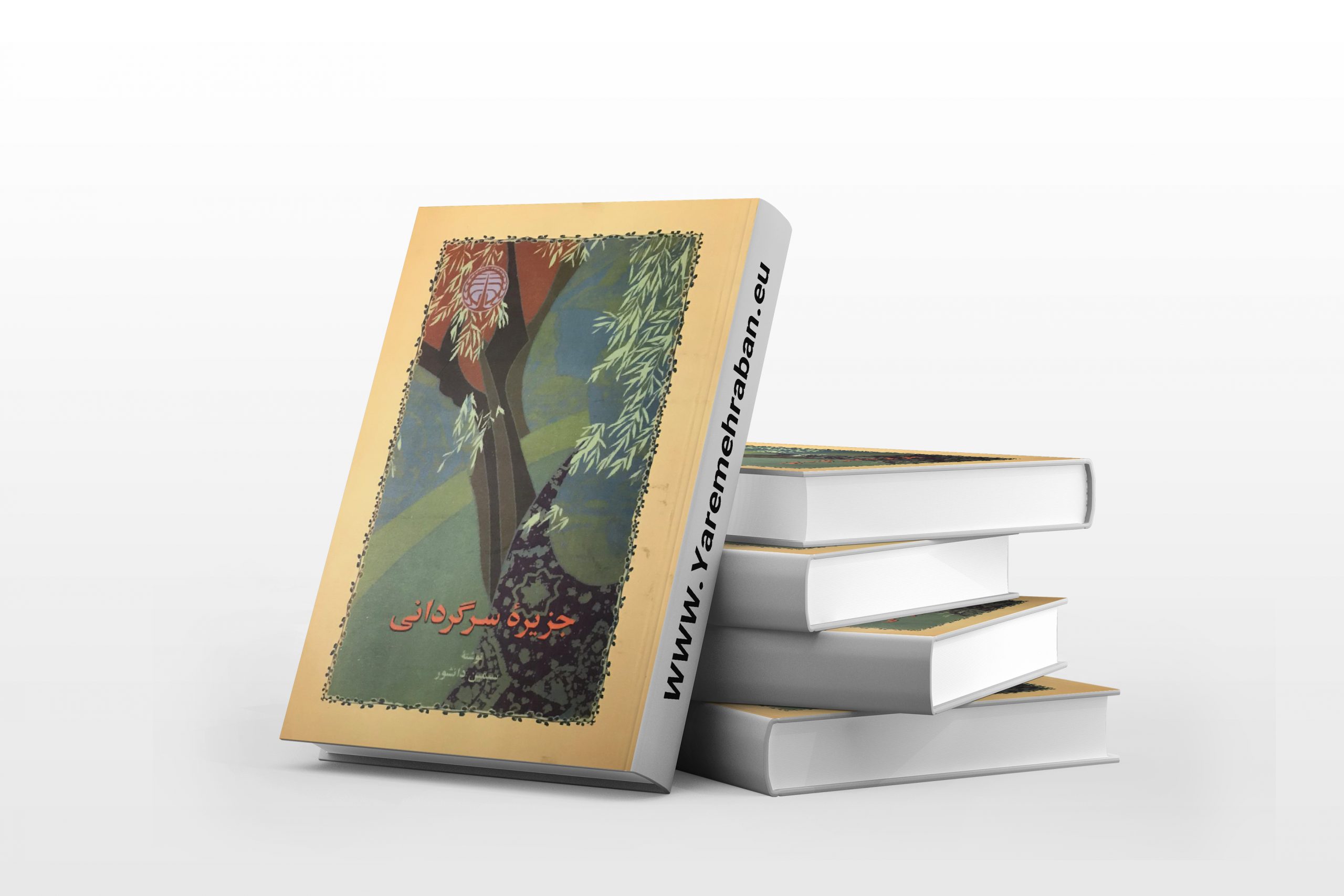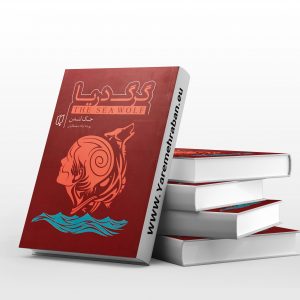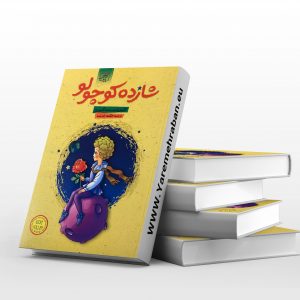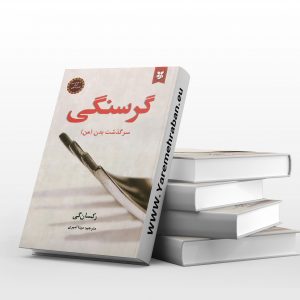Description
The book Wandering Island is a novel written by Simin Daneshvar, first published in 1993. In this fascinating novel, Simin Daneshvar deals with the issue of identity and the confusions related to it, and in the form of metaphor and story, considers the history of Iran; A country where different and even conflicting ideas and worldviews meet.
Hasti is a girl who lives with her religious grandmother and her brother, Shahin. She lost her father in the political unrest and her mother is a modern-day woman.
Hasti has fallen in love with one of her classmates at the university, a mass boy named Murad. He also has another suitor named Salim, who is a rich and religious boy. Hasti, however, does not know what decision might be right for her life and is wandering on the island of her doubts.

Excerpt from the book Wandering Island
If, as the grandmother said: God is manifested in man, surely in the eyes and gaze, he shines more brightly than other senses, it will be seen from sound eyes.
He watches Salim with his eyes closed and as if he is relieved of the earth and time. It was as if his soul was separated from his body … Hasti wanted to pull the blanket over him, he opened his eyes.
He got up, put a bag of boiling water on his waist and wrapped himself in a blanket … he asked Salim: “Did you sleep?” “No, I was focused on relieving the pain,” Salim said. “You call these situations the world of Heparot.” Hasti sat on the sofa and was silent.
He thought, “What kind of people are these men?” As soon as they see the side a little tame, their mischief begins. “Man, I was waiting for you to say that I was in the sea of revelation, but you, who came out of that state, brought me a bunch of thorns.”
“Do you want to know why God gave you these shoulders?” “To carry the burden of life.” “No, girl, to lift you up … don’t be hard, do you have something to say?” “say.” “When you are alone, laugh out loud, you learn to laugh little by little!”
The novel Wandering Island is a work by Simin Daneshvar, a non-linear narrative of a story
The space at the beginning and end of the island novel is surrealistic wandering. The story of Wandering Island revolves around a girl named Hasti who loses her father, Hossein Nourian, between August 13 and 17, 1943, who is killed in front of the parliament.
He and his brother Shahin will be in charge of Hossein Nourian’s mother Turan, because Hasti’s mother will marry Ahmad Ganjour before her husband’s birthday.
Introducing the Wandering Island book
In the fascinating novel The Wandering Island, Simin Daneshvar deals with the issue of identity and its related confusions, and in the form of metaphor and story, examines the history of Iran; A country where different and even conflicting ideas and worldviews meet.
Hasti is a girl who lives with her religious grandmother and her brother, Shahin. She lost her father in the political unrest and her mother is a modern-day woman. Hasti has fallen in love with one of her classmates at the university, a mass boy named Murad.
He also has another suitor named Salim, who is a rich and religious boy. Hasti, however, does not know what decision might be right for her life and is wandering on the island of her doubts.
Book Overview
This work of Simin Daneshvar is written in a documentary-fiction style. Reality and fantasy are intertwined. It begins on a Friday in late March 1974 in Tehran and ends in 1975 during a ten-month period.
The structure of the novel Wandering Island is based on thirty-three chapters. The main text of the book is 326 pages and the average of each chapter is 16 pages. Follow the introduction and analysis of the novel Wandering Island with Book City.
A good novel does not end with one reading. The end of the novel is the beginning of the virtual life of the characters and the batting of relationships and stories in the mind of the audience.
Simin Daneshvar’s works are outstanding in this respect. Because the characters stay in mind and live with the audience. Characters engage the reader’s mind and create meaning with seemingly small actions.
Although these actions and adventures seem simple and superficial at first glance, they have deep meanings behind them.
The story of Sahar (Khosrow’s foal, the son of Yusuf Zari) who had lusted after the ruler’s daughter and was forcibly entrusted to her, had a lot of social talk, and with this small excuse, Simin Daneshvar had well shown a part of the society of Shiraz at that time.
The golden vow, which was a week in between giving bread and dates to prisoners and lunatics, seems very feminine and superficial at first glance, but when you look deeply, it is a wonderful metaphor for the society of that time in Iran. Yusuf Khan Kakabradar is a rare example of a conservative aristocrat and party of the wind, and he has done very well.
This novel is very “the story of the revolution” and it is better not to show a dark period of Pahlavi in Shiraz.
A period from which little has been written and people have rarely seen it.
In this sense, Daneshvar is one of the first novelists of the revolution.
But why does not his work become a full-fledged work of the revolution?
Another part of the text of the book
Hasti thinks that he means cedar.
Sedreh Touba, as Hafez said, should not be pulled. Hasti Mint kills a burnt tree and sits under it. There is no shadow, but you can lean on the tree. Under the tree is full of dead sparrows, broken wings as if blood had been shed. Bullet casings that are abundant. A few cats and dogs come and have nothing to do. Either they have no hands or feet.
All their eyes are blind. It was as if a mortar had hit them all. Cats meow. The dogs are howling.
Maybe they are hungry. But do not they see all the dead sparrows under the trees? The smell of ﻻshahs… Maybe they say in a dumb language that there is no one to help us? The universe passes through a ruined wall, over bricks and bullet casings, and reaches a burnt grass. He recognizes the grass from here, which has a sign next to it.
The sign reads: “Please do not walk on the grass. »
How much soil is on the grass – how much pit is there –
And a metal cylinder the size of their home water heater… a collapsed building can be seen in the distance.
How many are in the package? He sees his being waving on the ground.
But he does not find the key.
The universe sees two skeletons coming, hose-throwing, and standing in front of the universe.
They hug and kiss each other.
Hasti thinks that he means cedar. Sedreh Touba, as Hafez said, should not be pulled. Hasti Mint kills a burnt tree and sits under it. There is no shadow, but you can lean on the tree. Under the tree is full of dead sparrows, broken wings as if blood had been shed. Bullet casings that are abundant.
A few cats and dogs come and have nothing to do. Either they have no hands or feet. All their eyes are blind. It was as if a mortar had hit them all. Cats meow. The dogs are howling. Maybe they are hungry. But do not they see all the dead sparrows under the trees? The smell of ﻻshahs… Maybe they say in a dumb language that there is no one to help us?
The universe passes through a ruined wall, over bricks and bullet casings, and reaches a burnt grass. He recognizes the grass from here, which has a sign next to it.
The sign reads: “Please do not walk on the grass. »
How much dirt has been spilled on the grass – how much pit there is – and a metal cylinder the size of their home water heater… a collapsed building can be seen in the distance. How many are in the package? He sees his being waving on the ground. But he does not find the key. The universe sees two skeletons coming, hose-throwing, and standing in front of the universe. They hug and kiss each other.
1- Introducing the book on YouTube
2- Introducing the book in Aparat














Reviews
There are no reviews yet.